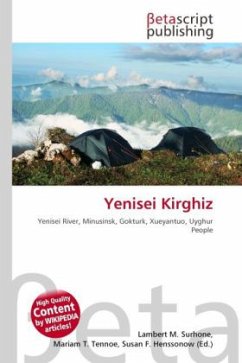High Quality Content by WIKIPEDIA articles! The Yenisei Kirghiz or Xiajiasi were an ancient people that dwelled at the headwaters of the Yenisei River and Minusinsk Depression between the 3rd century BCE to the 9th century. From the 6th century onwards, they were subjugated by various peoples including the Gokturks, Xueyantuo, Chinese and Uyghurs. The Yenisei Kirghiz can be correlated to the Tashtyk culture, which flourished in the Minusinsk Depression from the first to the fourth century CE. Settlements and hill-forts have been unearthed throughout the Yenisei region, particularly the Sayan canyon area. Their most imposing monuments were immense barrows-crypt structures, which have yielded large quantities of clay and metal vessels and ornaments. In addition, numerous rock carvings have been found. During the excavation of the Oglakhty cemetery south of Minusinsk, Leonid Kyzlasov discovered a number of mummies with richly decorated plaster death masks, and there were also well-preserved fur hats, silk clothes, and footwear (now in the Hermitage Museum, St. Petersburg).








